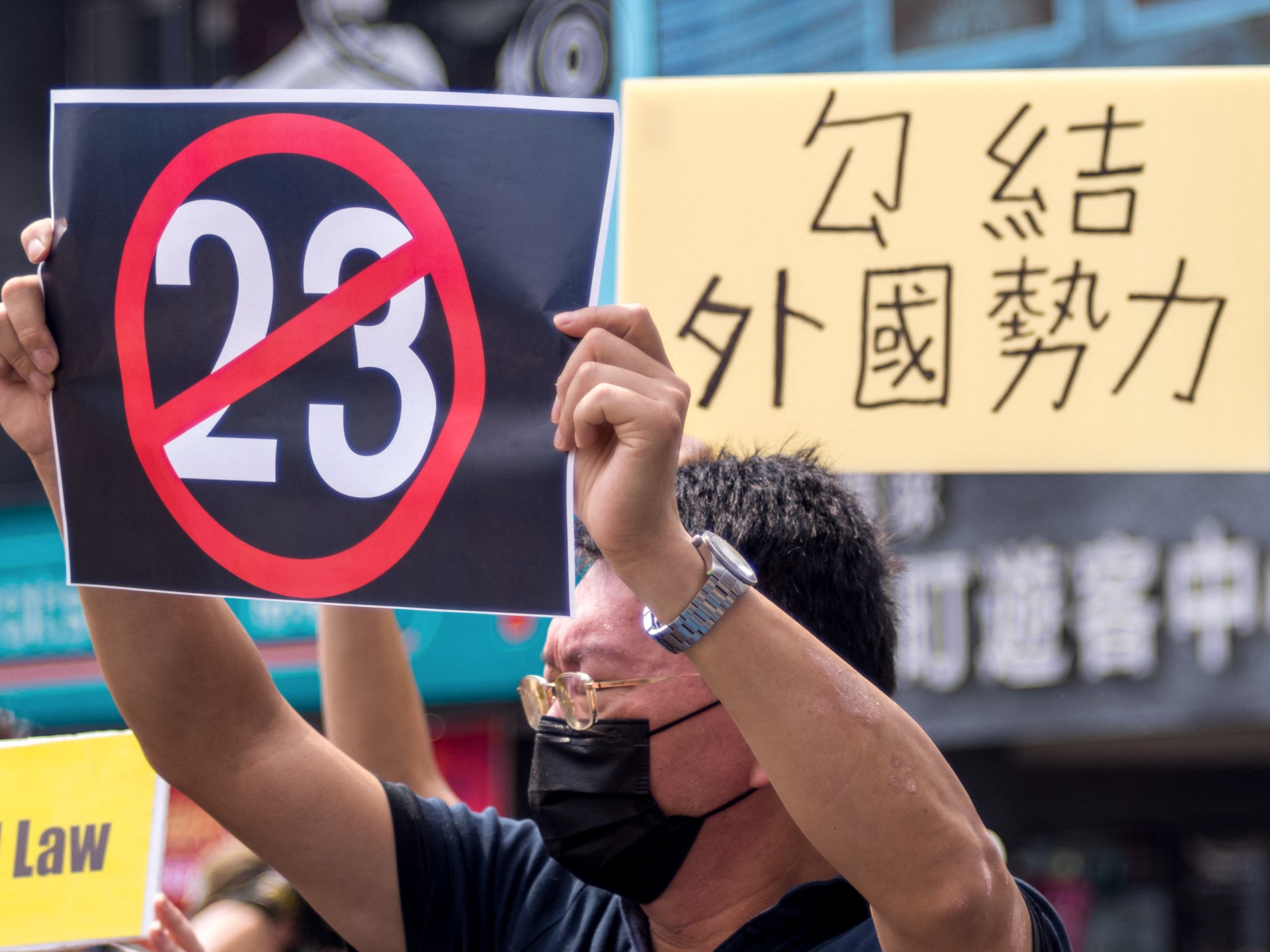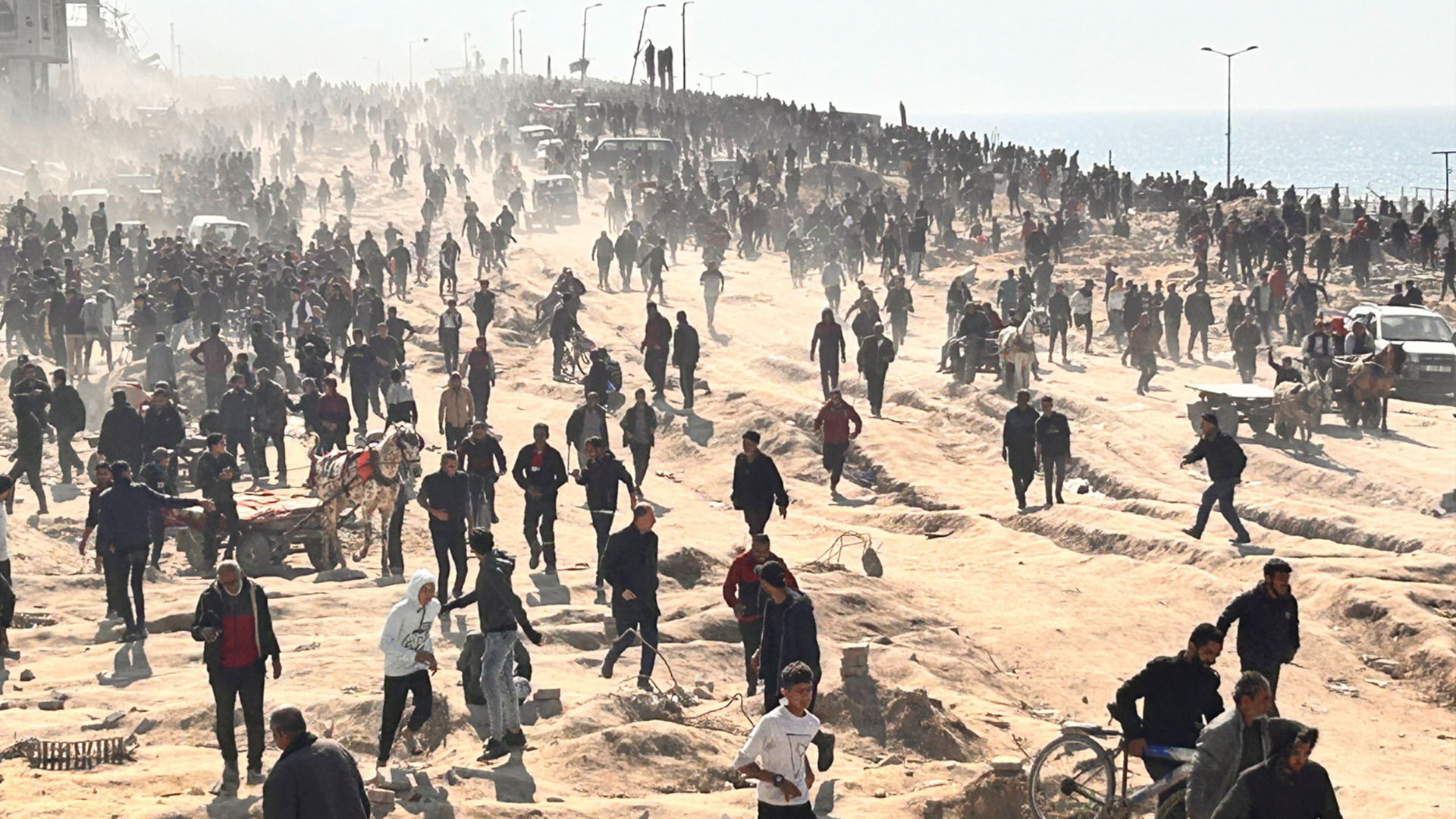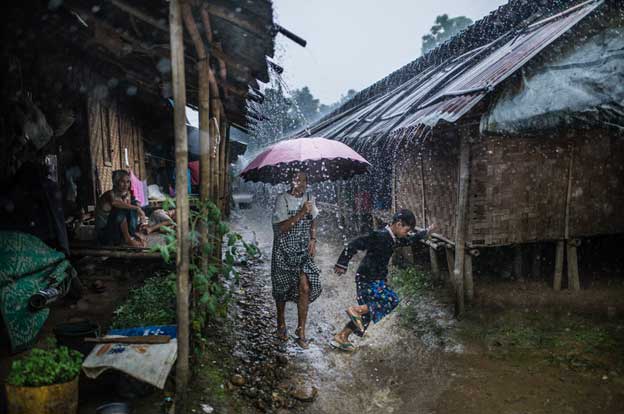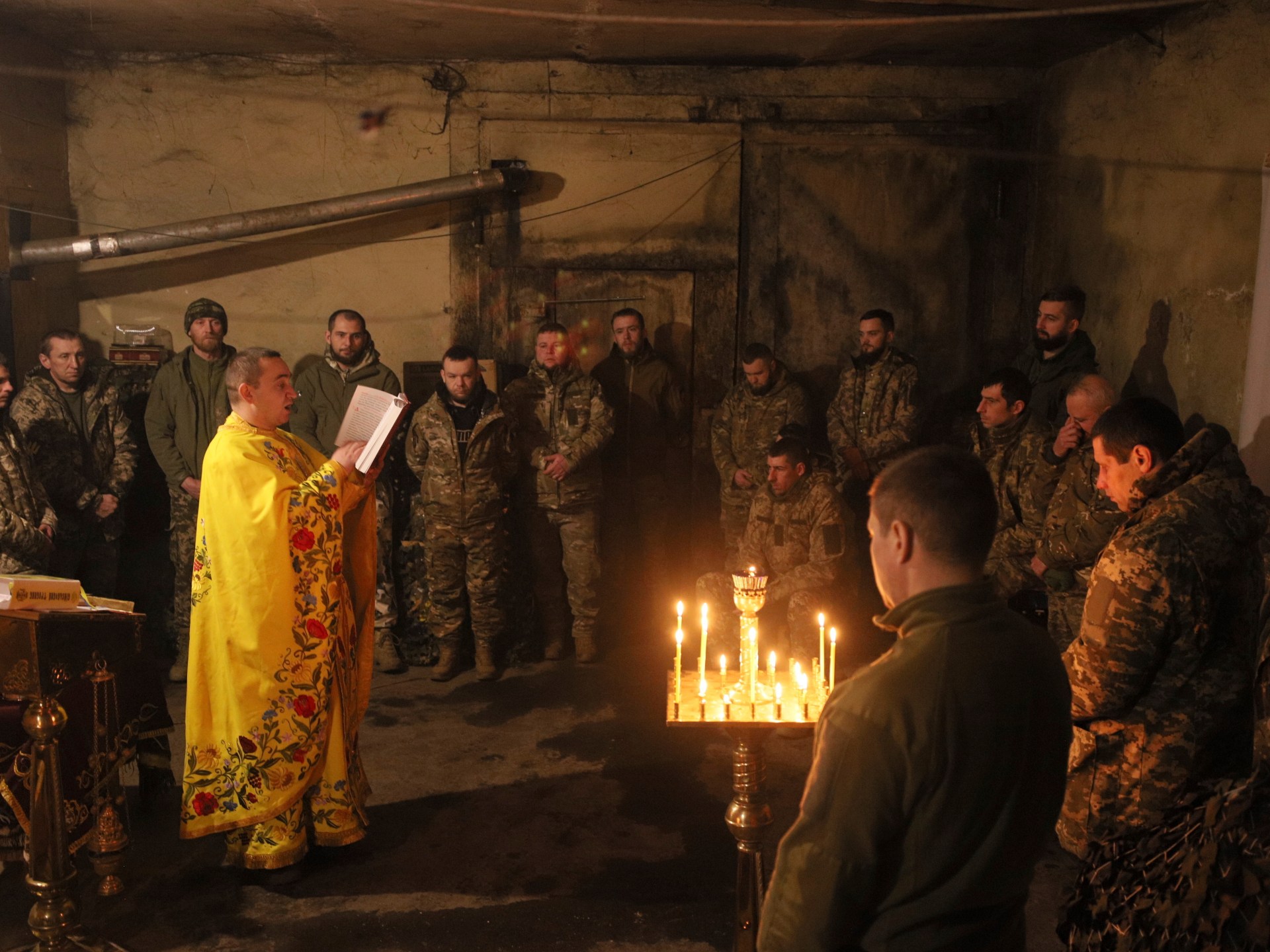‘Why was my child killed?’ Parents grieve a month after Bangladesh clashes | Protests
Dhaka, Bangladesh – In the early afternoon of July 19, four-year-old Abdul Ahad was on the balcony of his family’s toy-strewn, rented apartment in Rayerbag neighbourhood when he saw a commotion on the street.
Abdul, loud, curious and always asking questions, called out to his father.
“Dad, look. Look what is happening,” he said to his father, Abul Hasan.
Abul peered down at the street below. The street, lined with tall apartment buildings, was usually filled with pedestrians, vegetable vendors, rickshaws and children playing cricket on the pavement. But it was a weekend and a curfew had been imposed that day following recent protests and clashes, and the street was quieter than usual.
Abul, 33, and his wife, Sumi Akhter, 26, joined Abdul on the balcony. Abdul’s older brother, Matubbar, 11, the quieter of the two siblings, was at his religious school where he lives and studies.
“There were clashes between two groups,” Abul recounts. A group of about 10 young people – likely student protesters – were throwing stones at a larger group of young men, widely believed to be supporters of the then-ruling Awami League party, who held sticks and other objects. “I couldn’t see clearly from the eighth floor what objects those were,” Abul says.
Abul does not recall any police presence. Mobile footage taken in the neighbourhood shown on Bangladeshi news channel Rtv shows at least one man in the larger group aiming with a gun. Abul remembers hearing people shouting and the distinct sound of gunshots.
Abdul fell to the ground.
In early July, students in Bangladesh had began peaceful protests against the reinstatement of a controversial job quota system, which reserved nearly one-third of positions for people whose ancestors fought in the 1971 war for independence. By mid-July, the protests had turned violent as the government of Prime Minister Sheikh Hasina cracked down, deploying police and other armed forces while members of the Chhatra League, the Awami League’s student wing, who were sometimes armed, attacked and clashed with student protesters.
That day the clashes reached Abul’s family. At first, Abul thought his son had slipped and fallen, but then he saw blood on his face, head and shoulder. He had been shot in the right eye. Sumi, his mother, started to scream.
“The floor was covered with blood. I don’t know where the bullet came from. My world went dark at that moment,” Abul recalls, his voice choked with grief.
‘My child was not safe in my own home’
Abul remembers rushing to lift Abdul and getting him into the lift with Sumi. As they carried Abdul out of the building, the clashes had already dispersed and people on the street rushed to help them find one of the few autorickshaws on the street. Abdul was barely conscious. As the vehicle sped to the hospital, Abul held his son tightly, praying and crying. At some point, the police stopped them and Abul had to plead to let them continue.
Once at the hospital, Abdul was immediately operated on then kept on life support in the intensive care unit (ICU). All Abul and Sumi could do was wait anxiously outside the ICU with their eldest son, Matubbar, who had joined them. The next evening, at about 8:30, a doctor emerged from the ICU to tell them Abdul had died.
“My child was not safe in my own home,” says Abul, as he sits in the family’s dining room, his voice breaking. “Why did an innocent child have to die?”
He continues: “I am a government employee. My grandfather was a freedom fighter. My child was innocent.”

Abul went to his ancestral village of Pukuria to bury his son. He has returned to an empty, quiet house and keeps half expecting to see Abdul, who loved lollies, chips and chicken, on his chair at the dining table or in his usual spot in front of the television. Abdul’s death has splintered the family. Sumi cannot bear to return home without their son and is staying with relatives, nor can she bring herself to be around her other son, who reminds her of the child she lost. Matubbar, meanwhile, is traumatised by his brother’s death and is staying with other relatives.
Now, Abul stares blankly at Abdul’s toys—his favourite collection of small cars, motorbikes, jeeps, robots and stuffed animals. “I like to see my son’s favourite cars scattered around the house,” Abul says, heartbroken. “We left them as they were to preserve his memory.”
According to UNICEF, at least 32 children were killed during the July protests in Bangladesh. Local media reports suggest that nearly three times that number of children were killed.
On August 5, following the new demands of the protesters, Hasina, who after 15 years in power was facing accusations of growing authoritarianism from rights groups and critics, resigned and fled the country. A preliminary report from the United Nations suggests that more than 600 people may have been killed in the unrest and in the immediate aftermath of Hasina’s resignation. Those killed were largely student protesters and bystanders but also journalists and members of the security forces. The report attributes most killings and injuries to the security forces and the Chhatra League.
The UN report notes that “police and paramilitary forces appear to have frequently used force indiscriminately” against both peaceful protests and ones with elements of violence – sometimes with protesters holding sticks or bricks – and employed “rubber bullets, sound grenades firearms with live lethal ammunition”.
Al Jazeera spoke to several families of children who were shot and killed during the unrest. None of them knows who killed their children.

‘I am just a kid. Who will shoot me?’
Ijajul Islam, the executive director of the Human Rights Support Society (HRSS), closely monitored the student movement. His organisation collated information through volunteers and news stories about those killed during the protests and are pushing for a proper investigation and accountability.
New reports and accounts suggest that “almost all the children were shot dead by the indiscriminate firing of the security forces, mostly by the police”, Islam says.
On the afternoon of July 20, 10-year-old Hossein Mia wanted to go out and play in the field at the end of a street near his home in the Muktinagar area of Chittagong Road, a residential neighbourhood in central Dhaka. There had been protests in his neighbourhood since July 15.
Hossein, who left school after class three to work as a street hawker selling children’s books, popcorn and juice to support his family, was bored from being stuck at home. The protests had disrupted his work and his mother, Maleka Begum, 30, was concerned about recent violence in the area and wanted Hossein to stay home that day.
“Ma, I am just a kid. Who will shoot me?” she remembers Hossein telling her.

Though worried, she finally agreed, knowing that her son often played in the same field and that afternoon seemed peaceful compared with previous days. She told Hossein to return in an hour. Hossein left at about 4:30pm. But when the hour passed, he still hadn’t returned.
By then the situation in the neighbourhood had changed dramatically.
Hossein’s father, Manik Mia, 35, a pickle vendor, went to search for his son, alarmed by what was happening outside – there was now tear gas smoke everywhere, police getting out of vehicles and the sound of gunshots. Manik ran, dodging people who were running. He didn’t see any student protesters on the street.
“Everyone was running,” Manik recalls, speaking outside the family’s single-storey home with walls of metal sheeting. “I saw police firing here and there, and there was smoke from tear gas everywhere.”
But when he reached the street that led to the field where Hossein had gone to play, police officers and several vehicles blocked the road. Manik was afraid of approaching the police, fearing an aggressive response.
Even if he could not enter the field, Manik went to other fields, the market, and to neighbours to ask about Hossein. Two hours passed before he returned home. He and Maleka then went out, leaving their two daughters, aged eight and six, at home. By then, the police had gone and they were able to check the field but found no sign of their son.
![Bangladesh children - Hossain [Courtesy of Hossain's's family]](https://www.aljazeera.com/wp-content/uploads/2024/08/1-a-copy-1724682414.jpg?w=770&resize=770%2C513)
‘Who will give me justice?’
There were now others on the streets looking for missing family members. Pictures of the wounded and dead were being shared on social media and people in the neighbourhood were sharing updates and trying to help those around them locate their family members.
The couple was frantic at this point. As they asked people on the streets about Hossein, a man came up to them to try to help. He showed them pictures of people from the area who had been injured. They were devastated to see one that showed Hossein with a bloodied waist. The man told them that injured people had been taken to Dhaka Medical College Hospital so Maleka and Manik rushed to get there.
Manik did not have money as he did not work that day and he and Maleka had to persuade a pick-up driver and then a rickshaw driver to take them part of the way. They also walked for some of the distance to the hospital, eventually arriving after midnight, more than two hours after they set out.
The hospital was overwhelmed. They asked around about their son but all they could do was wait for news. Manik and Maleka believed Hossein was receiving treatment, as doctors on duty had mentioned that many people from the Chittagong Road area were being treated for gunshot wounds. Though worried, they were hopeful. They waited in the hallway of the hospital, sitting and pacing. They prayed and reassured one another: “Not to worry, Hossein will be safe.”
There were many families looking for their loved ones and volunteers helped direct them to different wards or in some cases the morgue. At about 2am, a man asked who they were waiting for and when Manik told him about Hossein, the man brought them to the morgue. They found Hossein lying there among other bodies. Manik froze, then broke down in tears.
Hossein had been shot twice, in the back and hip, Manik says.
“I am a poor man. Who will give me justice for my son’s killing?” Manik asks, calling his son his “heart”.
“He was my only son,” Maleka says crying.
![Bangladesh children - Samir [Rubayet Mahmood/Al Jazeera]](https://www.aljazeera.com/wp-content/uploads/2024/08/8-1724682514.jpg?w=770&resize=770%2C433)
‘Why was my child killed?’
Six-year-old Riya Gop had boundless energy and an infectious laugh. She would dash from room to room, feet pattering, and dart up the stairs to the rooftop to play with dolls with other children. Her cheerfulness was known among her neighbours, who adored her.
“My daughter looked like a doll,” her father, Deepak Kumar Gop, says of his only child, who had a round face, wide eyes and a ponytail.
On the afternoon of July 19, Riya was playing with some family members and other children on the roof of the four-storey apartment building where they lived in Narayanganj, a residential neighbourhood dotted with trees and tangled wires and plants crowding the rooftops above. When clashes broke out in the streets, Deepak rushed to the rooftop to take Riya. He took her in his arms and as he headed towards the stairs, Riya collapsed onto her father’s shoulder. A bullet had hit her in the back of her head.
Deepak rushed Riya to a local hospital where she was referred to Dhaka Medical College Hospital the same day. There, Riya underwent surgery to remove the bullet, and in the days that followed, her neighbourhood prayed for her swift recovery, Deepak says. She remained unconscious and was kept under observation, with her parents by her side the entire time.
Five days later, Riya died.
“My child was born after many years of marriage. We had to wait so long for her arrival,” says Deepak, choking back tears while speaking to Al Jazeera over the phone.
Deepak and his wife, who declined to share her name, both in their thirties, are unable to make sense of the loss of their daughter.
“Who will give me justice? What’s the point of talking when my child has already been killed? Why was my child killed?” Deepak asks, his voice trembling.
On the same day that Abdul and Riya were killed, 11-year-old Safqat Samir sat at his reading table next to the window in his family’s home in Mirpur Kafrul, a residential area with housing for government employees. Outside, the streets were filled with ongoing protests, which had engulfed the entire neighbourhood. What had started as peaceful demonstrations earlier in the afternoon had quickly escalated as clashes between student protesters and security forces intensified – tear gas filled the air, and the sound of gunfire swept through the street.
When tear gas started entering the house in the early evening, Safqat’s uncle, Mashiur Rahman, went to close the second-floor window. A bullet grazed Mashiur’s shoulder then struck Safqat, who was standing behind him, through the right eye.
Safqat’s mother and grandmother, who were in another room, rushed the child to hospital but he died on the way.
Safqat’s grief-stricken father, Sakibur Rahman, 33, was buying groceries at the time. He recounts seeing a helicopter in the sky and a clash between police and students on the main road in front of Kafrul Police Station.
“My wife doesn’t talk to anyone,” Sakibur says, his voice filled with sorrow. “My son was innocent. He dreamt of being a footballer. What was his fault?”

Accountability
On August 8, Nobel laureate Muhammad Yunus was sworn in as the chief adviser of the interim government of Bangladesh. A week later, on August 15, UN officials announced that a fact-finding team would be sent to Bangladesh to investigate alleged human rights violations during the protests.
With the interim government now in place, there is growing pressure to ensure accountability and justice for the people killed.
As the UN prepares to launch its investigation, questions remain about who will be held responsible for the violence and whether the new government will be able to protect the rights of its citizens and deliver justice.
Sakibur is unsure whether the government will deliver justice, something he says he could not afford to pursue. “I am from a middle-class family. I can’t afford to go to court cases,” he says.
What he thinks about now is how he regrets that he did not take Safqat to the playground when he asked to go, or buy him the toys he wanted.
“No father in the world deserves this,” he says.
Abdul’s father Abul sits motionless in a dining room chair, surrounded by his son’s toys.
“I don’t want anyone innocent to be punished for my child’s death,” he says. “I want a proper investigation.”
Still, any answers are unlikely to ease the pain of losing his child. “My world was shattered,” Abul says, his voice shaking, tears in his eyes.
“How can anyone compensate for this loss?”
Check out our Latest News and Follow us at Facebook
Original Source







